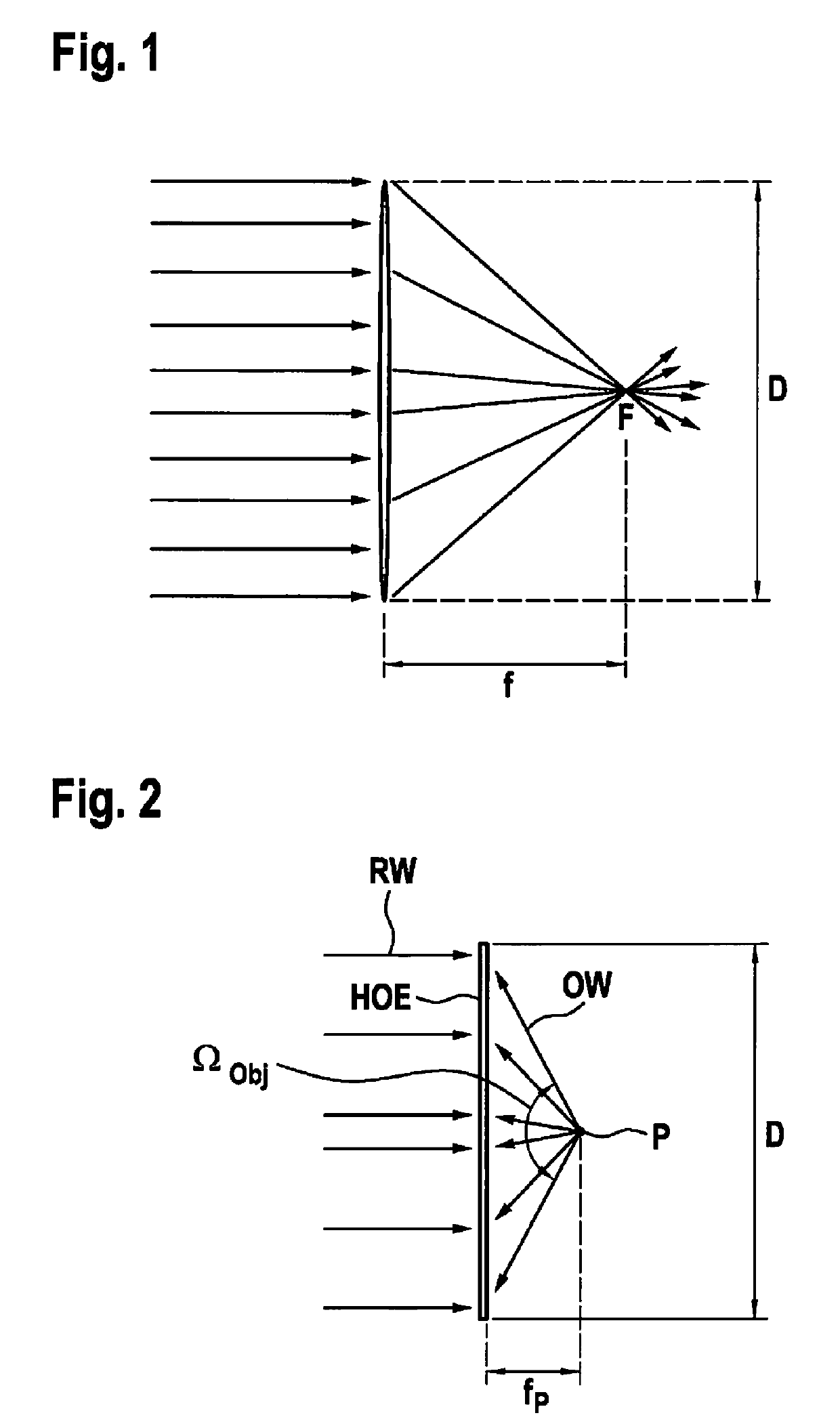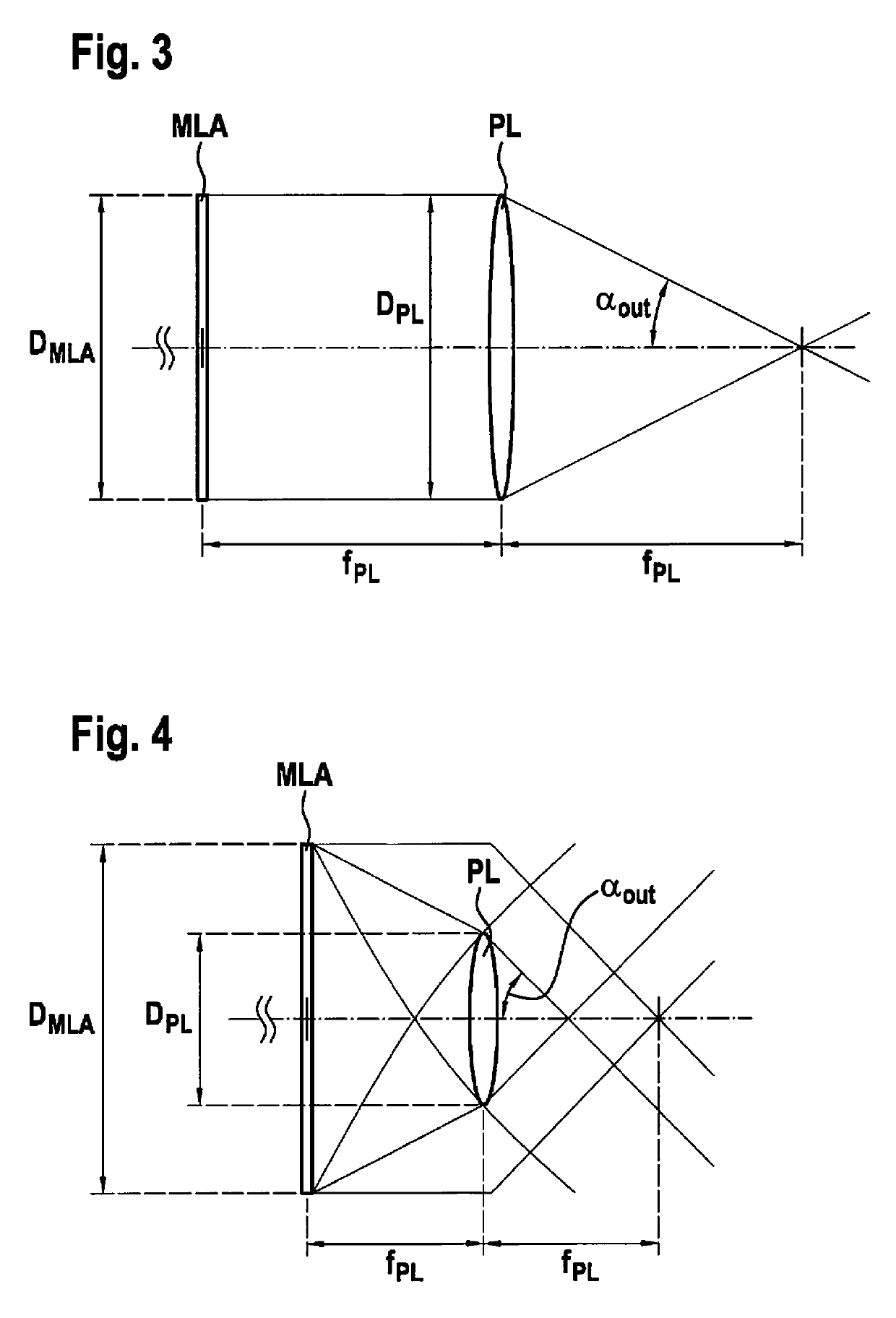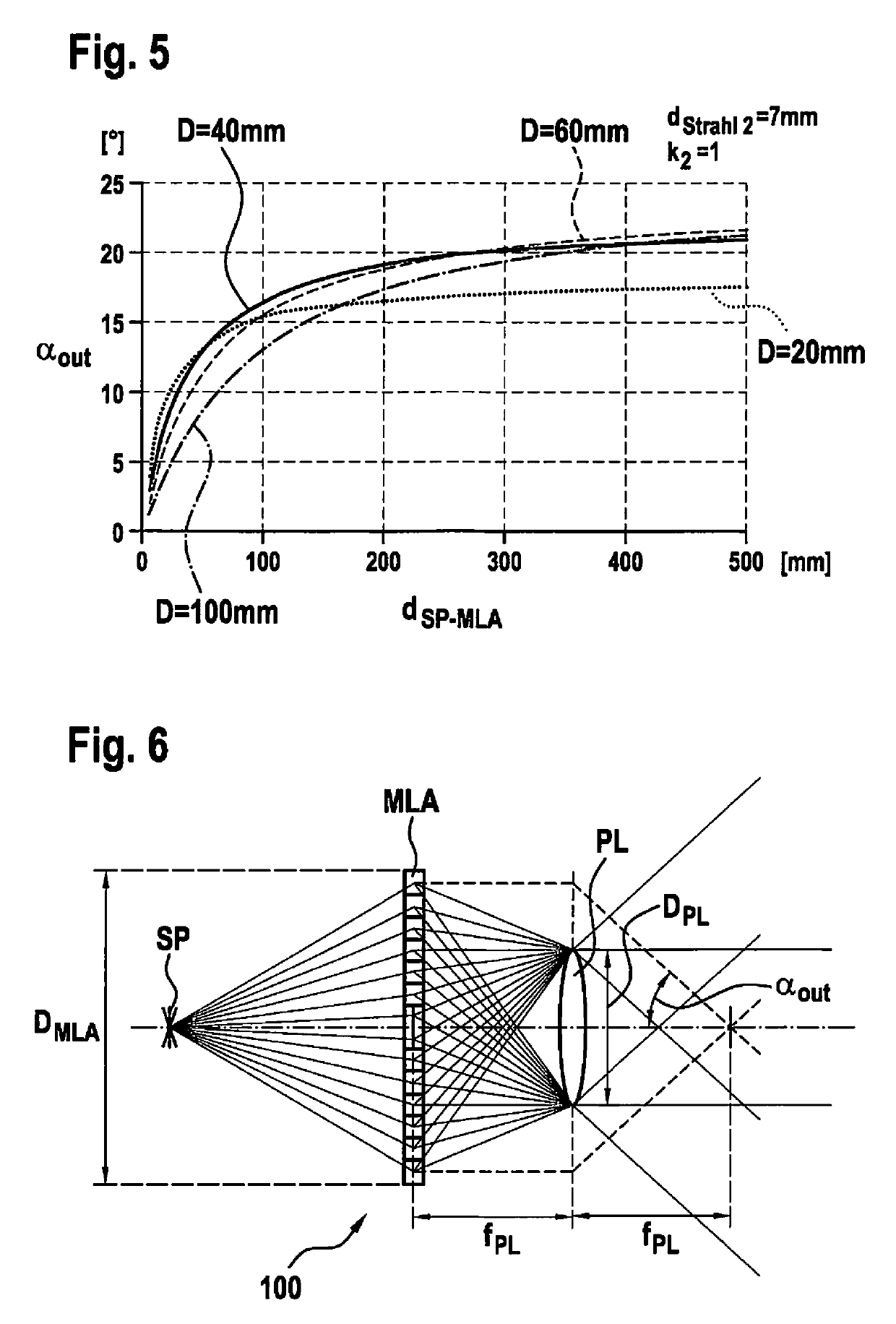Optical element for a lidar system
- Summary
- Abstract
- Description
- Claims
- Application Information
AI Technical Summary
Benefits of technology
Problems solved by technology
Method used
Image
Examples
Embodiment Construction
[0036]An important aspect of the present invention is to provide at least one holographic optical system for a coaxial lidar system in which a common optical path is provided for the transmit and receive path. In this way, limitations of conventional optical systems can be overcome, and the constructive space of the overall system can be reduced, or angles of deflection of the scanning laser beams can be increased.
[0037]For this purpose, holographic materials based on polymer materials may be used that act as diffraction gratings in the infrared spectral range. The named polymer materials have advantageous properties for use in the automotive field, because they are very resistant to the environmental influences that prevail there (e.g. fluctuations of temperature or of humidity, etc.).
[0038]FIG. 1 shows the configuration of a conventional optical system having a lens having a diameter D, a focal length f, and a focal point F. Here the following mathematical equation or condition ho...
PUM
 Login to View More
Login to View More Abstract
Description
Claims
Application Information
 Login to View More
Login to View More - R&D Engineer
- R&D Manager
- IP Professional
- Industry Leading Data Capabilities
- Powerful AI technology
- Patent DNA Extraction
Browse by: Latest US Patents, China's latest patents, Technical Efficacy Thesaurus, Application Domain, Technology Topic, Popular Technical Reports.
© 2024 PatSnap. All rights reserved.Legal|Privacy policy|Modern Slavery Act Transparency Statement|Sitemap|About US| Contact US: help@patsnap.com










